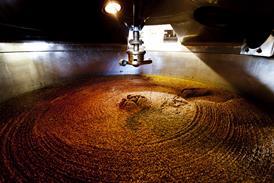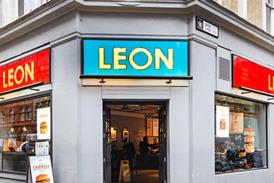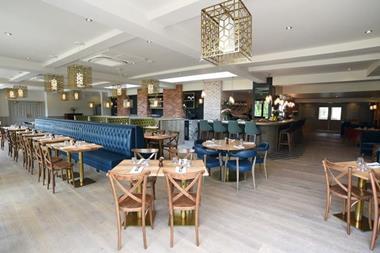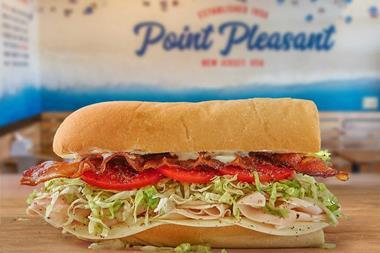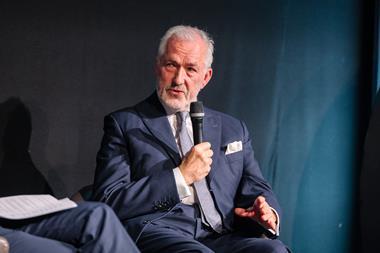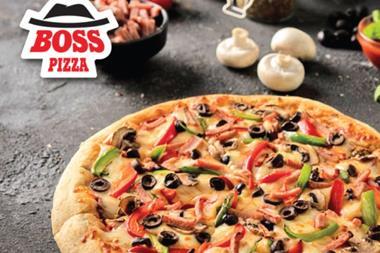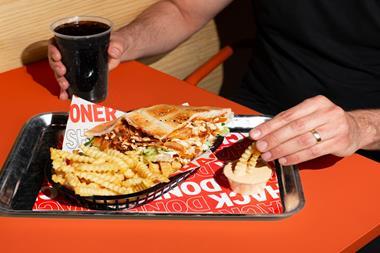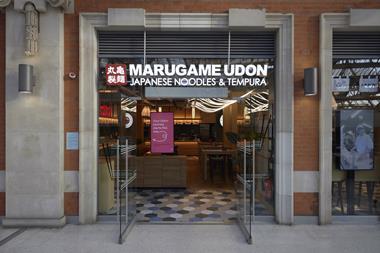A year on from acquiring the 44-strong Strada business, owner Hugh Osmond and new operations director Tom James talk about going back to basics, putting the foundations in for future growth, new concepts, property and acquisitions. Mark Wingett reports
A year on from Sun Capital’s £37m acquisition of Strada, the investment vehicle’s founder Hugh Osmond is considering the state of the business he found.
“More challenging than you imagine?”
I ask. “No, I don’t think so,” he replies. “In the first few months, the actual trading performance in the existing sites was much stronger than we expected. Since the start of this year, the base level of trading reverted more to type, which has meant we’ve needed to accelerate the pace of change slightly. I don’t think it was more challenging.
“The transaction itself was both better and worse than I expected but I would caution anybody buying a business that is going through an administration process. There are some good things and bad things to come out of it. It was not as straightforward as we thought it would be.”
Osmond admits that an awful lot of time has been spent on each property and on negotiations with landlords, “more time than I would have liked but, at the same time, some good things have come out of that”. He explains: “You are examining each property as if it is a new deal. Sites like Brunswick (now closed) and Brighton (set to become a Wahaca at the time of going to press) we don’t pay for but there is a lot of wasted effort and, therefore, we are not fully concentrated on the core estate.”
In May, the group announced that it had overhauled its supply chain to focus on quality and provenance of ingredients as the first step in its rebranding.
Osmond says: “We have tweaked the Strada menu rather than doing anything rash to it. The core customer is relatively conservative. Before we look to make a radical upgrade across the estate, we have looked to make incremental changes.
“It had become a victim of the discounting culture, which may be a valid tool for some but was not the way we wanted to go. In general, so far, I am pretty happy with the steps we have put in place.
With work under the bonnet of the business well under way, the next step was building a team to take the brand further forward.
Osmond has, whether by design or coincidence, ended up with the majority of the operational team that successfully launched Jamie’s Italian on to the market. During the past year, Matt Fanthorpe has been hired as chef director; John Metcalf as procurement director; and most recently Tom James, as operations director.
He says: “Every new member of the team that we have has been handpicked, not found through agency searches. We have gone after them personally. I do think we have now got a team that is the best that can be found anywhere in the sector.
“I can’t imagine a better restaurants finance director than Jackie (Freeman), John (Metcalf) with his background at Fresh Direct, PizzaExpress and Jamie’s, you don’t really get that experience in a procurement guy. He has all the experience and could be a chief executive himself, but that’s not what he wants. He brings coherence across the business. The same goes for Matt, in terms of the stage of his career. We don’t want to produce Jamie’s, we want to do something different, perhaps what the Trattoria format could have almost been, or a simpler version of that. Tom, who is the most recent addition, again I wanted the best ops director in the sector, but I wanted someone who was a little bit more exposed to some of the innovation in the marketplace, especially at the healthy end. Here’s a guy who has years of bar and restaurant experience, who has spent a year overseeing a trendy, juice bar concept (Roots & Bulbs). To get a bit of the mindset from that end of the market in a larger business is what we were looking for.”
The vision of the group is to take the brand back to basics. The initial part of vision was unveiled first at the group’s new-look site at St Katherine’s Dock in London in November.
James says: “Our clear vision statement is ‘to serve exceptional Italian dishes using the finest, freshest ingredients served by well-trained, knowledgeable and passionate staff in a contemporary well-maintained restaurant environment where the guest is at the centre of everything we do’. I want to implement that mission statement in every Strada restaurant by the middle of next year.
“We’ve gone back to the beginning of Strada, when it was a hugely successful and popular brand on the high street, and we’ve followed the evolution over about 10 years – the glory years – and looked at the point when it stopped evolving in the right direction and look at what the next step should have been. It takes some inspiration from the old Strada but we wanted to bring it up to date so it’s lighter with a more contemporary feel to reflect what’s been happening on the high street. We looked at the aspect that restaurants are quite simple – if you have great food served by knowledgeable happy staff in a great environment then you’re generally busy.
“Being an Italian chain, the kitchen and the food should be at the heart of everything we do. It was important to get that right with the menu and the chefs.”
James said the changes are reinvigorating the Strada team.
“What I enjoyed most in the early days of Jamie’s was the energy and excitement throughout the entire team – the food passion throughout that business was incredible. What I’m finding with Strada is, at grassroots level, there’s some brilliant people in the business but what they need is investment passion and training to get them up to speed,” James says. “On the eve of opening the new-look restaurant, the vibe is incredible and the team can’t wait to get the doors open and get customers in.”
“There’s been a lot of change in the business during the past five or six years, which has probably had an impact on the staff. Having that constant energy and enthusiasm with the really clear vision for the company that’s delivered every day will reap the rewards in the long term.”
“We would like to introduce the new look as quickly as possible. We’ve brought on board some really passionate and dynamic people and that creates an energy so we want to keep that energy going and move quickly.”
James says that the group is actively looking to acquire new sites but has not set targets of how large the estate will become. “We have six-month goals of what we want to achieve and review at the end of each.”
James has also helped bring much-needed consistency to the brand’s offer. Osmond says: “It was quite variable, but trading has picked up over the past few months. For us, some of what were already our busiest restaurants (More London and Royal Festival Hall) have been going ‘gang busters’. Some of the variations of trading are inexplicable, even between two restaurants, which are half a mile apart.”
Osmond admits he wasn’t convinced the consistency of the offer across the estate was right.
He says: “We had done all the work behind the scenes and put all the right plumbing in, so to speak, for example, the right supply chain, but I didn’t think the dishes were being served to the right standard consistency. We were sometimes turning the steering wheel in the centre but it wasn’t quite coming through to the wheels. Some of the variations in trading were down to the operation on the ground level. One of the reasons for bringing Tom in was to get that sorted out, to have that pair of eyes on that detail.”
James says: “Restaurants can suddenly get very complicated so I want to get us back to the basics. For me, once we’ve conquered that vision statement and those goals, which will reflect in the staff and the customers, that’s when we can look to the next stage.”
It took a while for the company to fully concentrate on further developing its own brand. A turning point came when talks to acquire Polpo, the Russell Norman and Richard Beatty-founded group, came to nothing earlier this year.
The company also ran the rule over La Tasca, which Osmond admits would “have been a pure site play”. He says: “At the end of the day, we didn’t see the numbers at that time in justifying the price, that’s not to say someone else might make it work or paid too much.
“The reason we looked at Polpo was an alternative to developing our own brand but I respect them for wanting to remain independent. Having not done that and having looked at half a dozen other things, we are looking at developing a brand ourselves.”
Osmond is also considering rolling out his new concept, Coppa Club, which launched this summer in the ground floor of the Great House Hotel in Sonning, near Reading, Berkshire, which is also owned by Sun Capital. The launch and development of the format was overseen by Fanthorpe.
Alongside Strada, the group is looking to open a second Coppa Club in Q3 next year after the success of the first in Sonning.
Osmond says: “With Coppa in Sonning we have 5,000 to 6,000sq ft, with the space to create something like a club, with many different areas. It has got things you would expect to find in a Soho House and I don’t think you can recreate on the high street. But there are things that we might take from it for a smaller version. Coppa has been going great since the day it opened.”
The second site will be in central London and that opening will coincide with the time that the Strada vision has been realised, which James says would allow the group to make any decisions about further sites or conversions.
He says: “We are planning to evolve both brands and we’re very excited about bringing it to London. There is the ambition to build both brands.”
People and training is the next part of the Strada puzzle that Osmond is focusing on. He says: “I have been thinking about this since I left the pub business and it has been on my mind, partly in response to the upcoming national living wage.
“We are going to change the whole approach of HR in Strada. We are going to start from scratch on that and get our game on training. That’s part of the focus for the coming year.”
Osmond is also of the belief that the company still has a place in the sector, which is inundated with new concepts and experiences.
He says: “Mostly, with people who have money to spend, there is a craving for the new. I think, though, that equally, there is a bigger human requirement for recognition, a relationship.
“There is very little that people like more than going to a place and people saying ‘How are you? I haven’t see you in a while’, that’s what we need to build on.”


